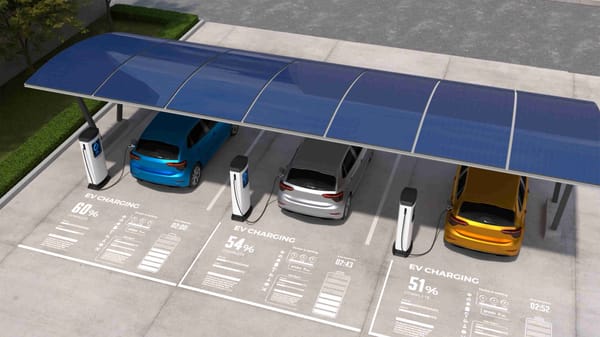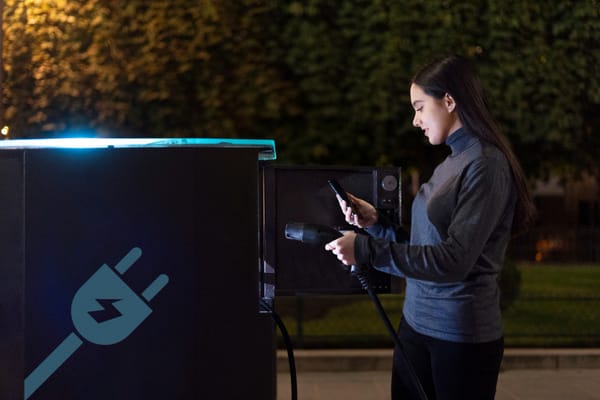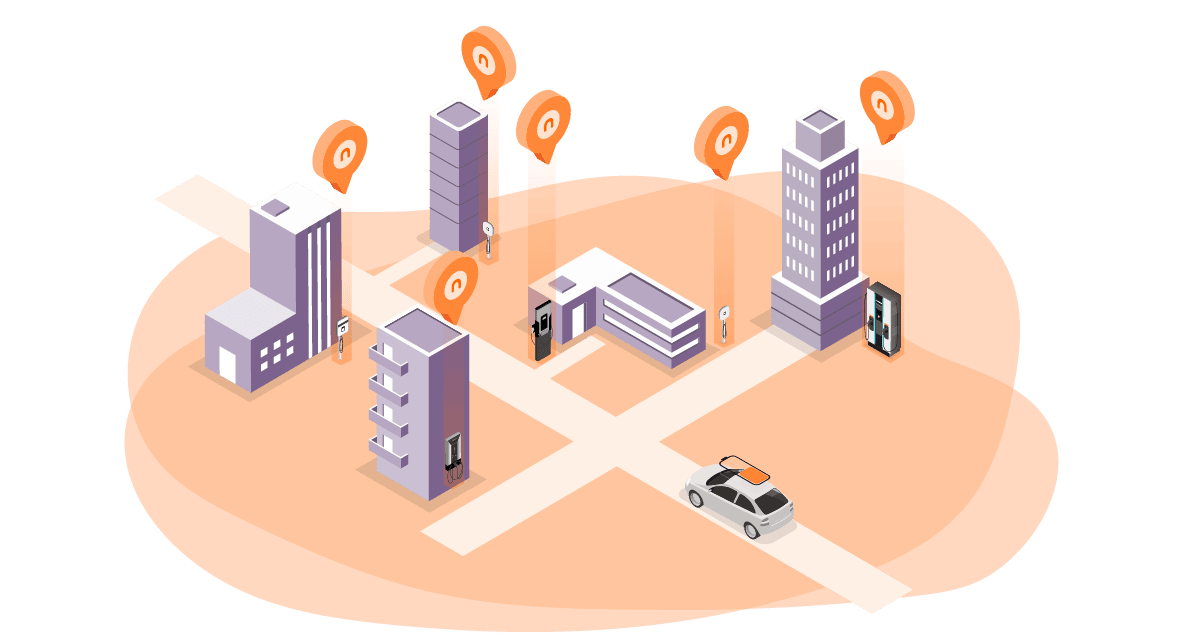"TruePower + EnerGrid": A gateway to the EV world, innovation, and the Future - Why & How?
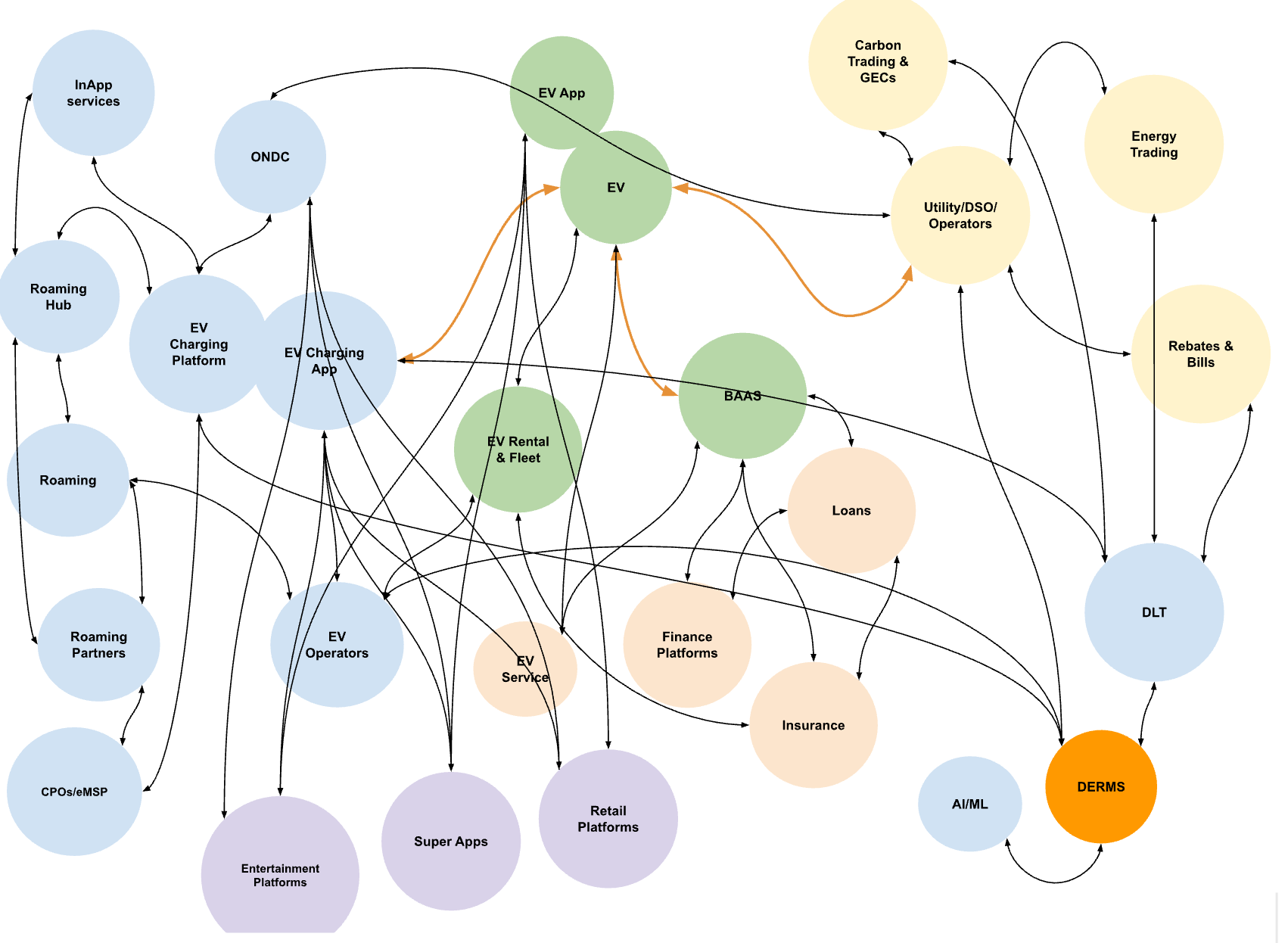
The diagram above illustrates the sprawling and dangerously complex digital ecosystem surrounding the Electric Vehicle (EV). At its core, it shows that the EV and its related services, such as the EV App and BAAS (Battery as a Service), are not part of a simple, linear system. Instead, they are the epicenter of a convoluted web of interactions.
The structure can be broken down into several key observations:
- Fragmented Core Services: The fundamental act of charging a vehicle involves a labyrinth of players. Data and commands flow between the
EV,EV Charging App,EV Charging Platform,EV Operators,Roaming Hubs, andCPOs/eMSPs. The presence ofONDCsuggests an attempt at standardization, but it adds yet another layer to an already crowded field. - Point-to-Point Complexity: The diagram is dominated by a mesh of direct, point-to-point arrows. There is no clear, central orchestrator. Every entity appears to be creating bespoke integrations with multiple others, leading to a brittle and unmanageable structure. For example, the
EV Charging Appalone connects to at least six other distinct systems. - Redundant Data and Control Paths: There are numerous overlapping functionalities and data pathways. This creates significant redundancy and a high potential for data inconsistency. An EV's data is simultaneously being shared with utilities for billing, finance platforms for loans, DERMS for grid management, and carbon trading platforms for credits, with no single source of truth.
- Massive Security Attack Surface: Each arrow represents a data transaction and a potential security vulnerability. With financial, personal, and critical grid-control data flowing between dozens of disparate platforms, the system is highly susceptible to breaches. A single weak link—like an insecure
Entertainment Platformconnected to aSuper Appthat has access to theEV Charging App—could compromise the entire network.
Assessment:
The current EV - EVSE - Operator - Services ecosystem as depicted, is cumbersome, unorganized, and precarious. This is not a robustly architected system; it is an organically grown tangle of dependencies. This complexity leads directly to:
- Redundancy: Wasted resources and conflicting data.
- Insecurity: A vast and poorly defined perimeter that is nearly impossible to secure.
- Instability: The failure of one minor node could trigger a cascading collapse across multiple services, impacting everything from a driver's ability to charge their car to the stability of the local energy grid.
In its current state, this structure is not scalable and poses a significant risk of systemic failure—a digital catastrophe waiting to happen.
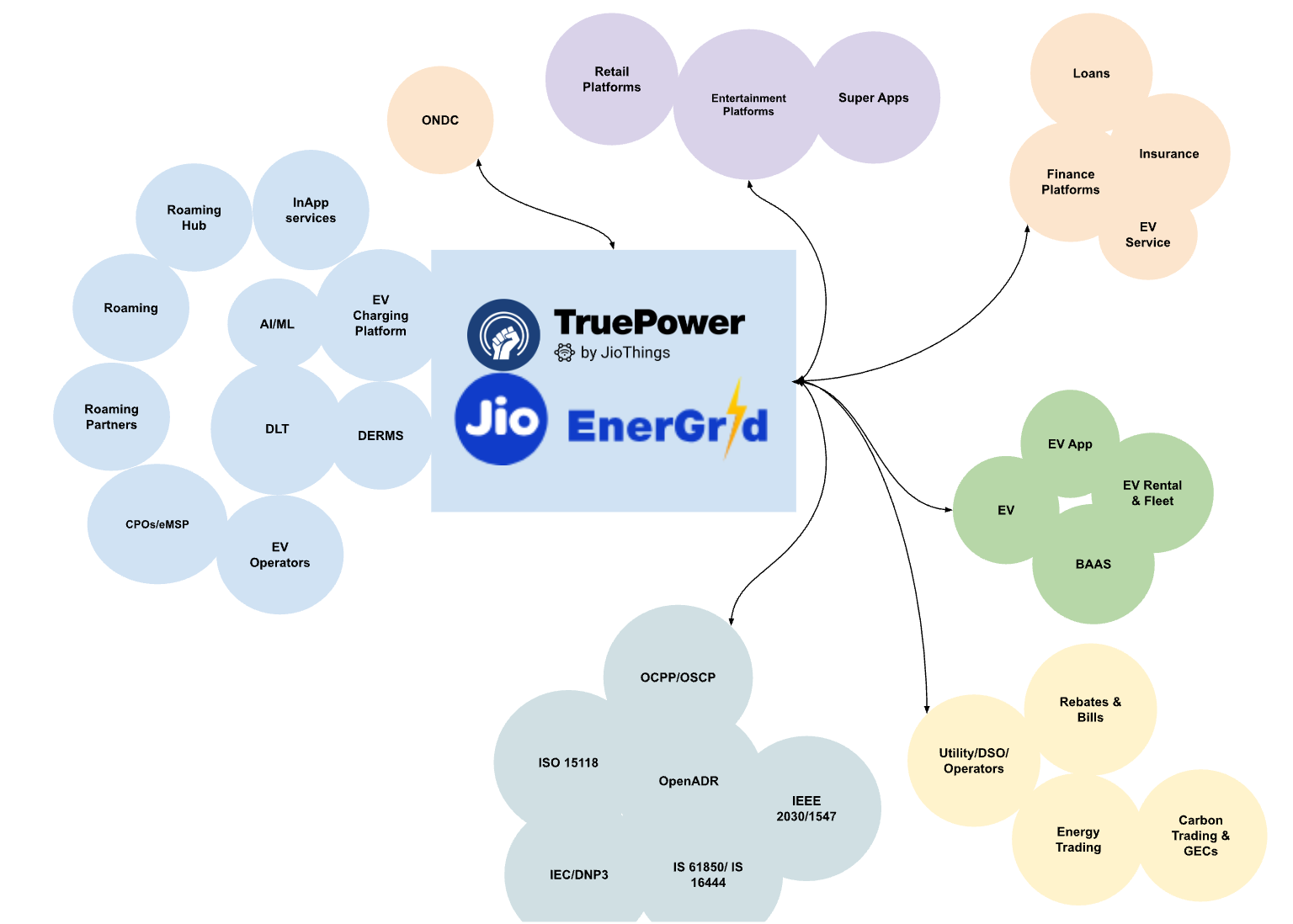
The Jio EnerGrid / TruePower platform acts as the central nervous system or the "operating system" for the entire EV ecosystem, eliminating the clutter and inherent risks of the fragmented model.
Here’s how this integrated platform solves the key problems:
Eliminates Complexity with a Hub-and-Spoke Model:
A clean hub-and-spoke architecture. The Jio platform is the central hub. All other partners—from CPOs and Finance Platforms to Retail Apps and Utilities—are spokes. They only need to integrate once with the Jio platform, not with each other. This drastically simplifies interactions and reduces integration overhead.
Establishes a Single Source of Truth:
The Jio platform becomes the single source of truth. It manages the core data for transactions, identity, vehicle status, and billing. This ensures data integrity and trust among all participants, from the EV driver to the energy trader.
Centralizes Security and Reduces Risk:
The attack surface is dramatically reduced and centralized. The Jio platform acts as a secure gateway, managing authentication, authorization, and data encryption for the entire ecosystem. Security is architected into the core, not bolted on at the edges.
Enables Scalability and Rapid Innovation:
The ecosystem becomes plug-and-play. A new finance company, retail platform, or roaming partner can join the network by simply connecting to the Jio platform's standardized APIs. This accelerates the growth of the ecosystem and allows for the rapid launch of new, innovative services.
Conclusion:
By moving from fragmentation to integration, the Jio platform fundamentally changes the dynamic. It's no longer a brittle web of dependencies but a robust, secure, and scalable marketplace. This architecture:
- Orchestrates all business value streams through a single point.
- Secures transactions and data for all participants.
- Standardizes communication, eliminating the need for bespoke integrations.
- Accelerates business growth and innovation.
In essence, Jio is not just participating in the EV ecosystem; it is providing the foundational platform upon which the entire ecosystem can be built securely and efficiently. This eliminates the "catastrophe" risk and unlocks the true commercial and operational potential of electric mobility.
-Balakumar P
VP-Engineering

